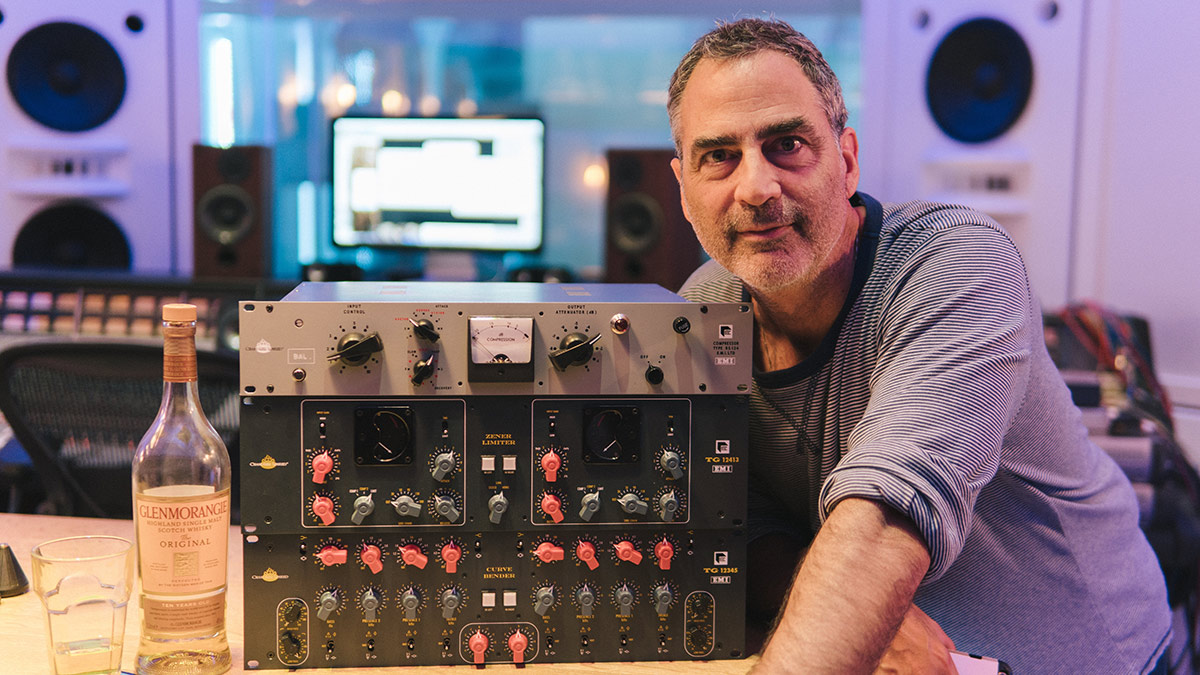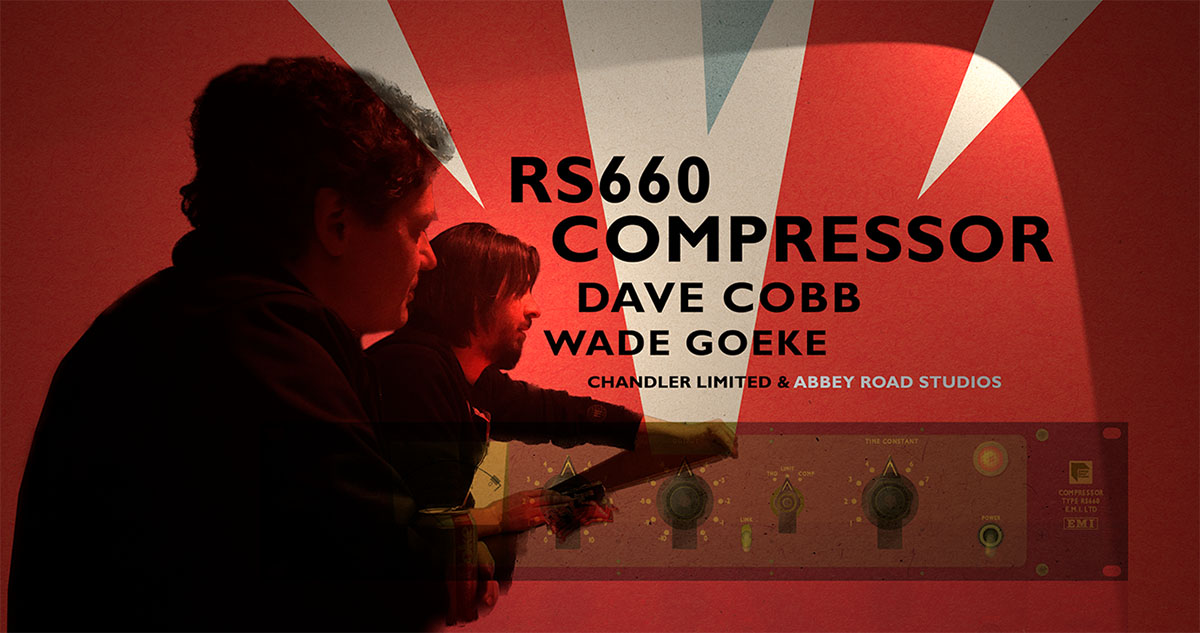Chandler Little Devils 500 Series EQ & Compressor
Review by Paul Vnuk Jr.
Recording Magazine June 2010
Chandler Limited’s Wade Goeke is just never satisfied with the mic preamps, eqs, and compressors he already has. First there was his LTD series of Neve emulations, next came his partnership with EMI/Abbey Road to reproduce modern versions of the classic EMI TG line, and this was followed by his Germ series based on vintage Germanium circuits (the first successors to valve-based technology back in the ’50s). We reviewed the eq and compressor from the Germanium line back in our October 2007 and March 2008 issues.
So what is Wade up to now? The new Chandler Little Devils, of course, a series so far consisting of an eq and a compressor, both of which we will be looking at today.
Red hot and on fire.
The Chandler Little Devils are a brand new collection of modules for API 500 Series enclosures. This format has been around for years but is enjoying a renaissance; with their small size and relatively low cost per channel, 500 Series modules are like the analog gear’s equivalent of plug-ins! Just mix and match to taste.
The Little Devils are Chandler’s first products strictly developed for the 500 series—aside from a limited number of Germanium mic pres in the 500 series format, no longer in production. Emblazoned in a bold fire engine red, they are the first units to move away from battleship gray and blue, adding a touch of vibrant color to the Chandler universe. These also may be the most original units that Wade has released, as they are not clones, reproductions or vintage recreations of anything.
Before digging into the individual units, let’s look at some features common to both.
Common ground
Each Chandler Little Devil uses amplifiers, inductors, and transformers on both the inputs and outputs. According to Wade, “You won't find any surface mount or ribbon cables in the Little Devils (used to build cell phones and computers)...”
Each unit’s build quality is really superb! The pots are tight, wiggle-free and smooth. The VU meter on the comp is well lit and mounted, and each unit’s circuit board is fully enclosed. While this is how it should be in units of this price level. I have experienced quite a few expensive 500 Series modules with exposed boards, loose fittings, wiggly knobs and crappy VU meters, so, nice job, Chandler. Each unit comes with a well-written manual featuring some great tips and starting-point settings.
Now let’s meet these devils.
Little Devil Equalizer
The Little Devil Equalizer is essentially a British-style channel eq in look and layout, but with custom-chosen frequencies and Q widths.
The unit starts with a hard bypass switch that, when engaged, has a dramatic effect on the sound even with all frequencies set to zero. You will instantly notice a boost in volume and a slight tonal thickening.
Each eq band offers ±18 dB of boost or cut. The inductor-based Mid bands, of which there are two, each feature a selectable hi or lo Q switch, and seven selectable frequency choices. The hi-mid frequencies are: 1200, 2700, 3300, 4700, 5600, 6800 and 8200, and the low-mid frequencies are: 220, 270, 330, 390, 470, 560, and 820 Hz.
The treble is capacitor-based, and is a fixed 12k shelving band. The bass frequency is similar to the treble and is also a capacitor-based shelving band, but offers a choice between 50 and 110 Hz corner frequency. The eq is rounded out by a pair of white toggle buttons that control a hipass filter with a choice of 47, 82 or 150 Hz.
Finesse with largesse.
While the eq does have English/Neve’ish design origins, it definitely has its own sound with a forward creamy presence, a smooth top end and a general largesse that is hard to put into words. It should come with a warning label that states, “Sources heard through the Little Devil Equalizer may appear larger than they really are.”
Similar to the Germanium Tone Control and most other Chandler gear, a little can go a long way and minute knob changes yield bold results. As such I found it fantastic to fatten up thin vocals or boost a kick into mega-sub land, and I quickly learned how the dual mid bands are well suited for heavy guitar work. The smoothness of the high frequency is also good for opening up the top end with a touch of air, without harshness.
Just as with a good console eq, cutting frequencies on the Little Devil is useful for taking the edge off of a snare or hi-hats, carving out a boomy acoustic guitar or seating harsh vocals in a mix.
With more of a classic modern rather than a vintage sound, this eq is definitely not for the tone-shy. If you want transparency then run the other way!
Little Devil Compressor
The FET-based Little Devil Compressor is an obvious culmination of many of Mr. Goeke’s previous designs, and really owes a lot to the Germ Compressor.
Dominating the top of the unit is a vintage-style kidney-bean shaped VU meter, which registers the amount of gain reduction the unit is performing.
Below that is the input attenuation knob, and Wade recommends setting this close to full for optimum gain staging of the unit. In this sense the Little Devil does not have a traditional Threshold control and as such is similar to a vintage TG style compressor.
Next to the input is the curve or knee selection switch with a choice of a Germ or Zener mode. While these should be familiar to anyone who has used the Germ Compressor or one of the Zener-diode-based Chandler TG comps, they are actually quite different.
Unlike the soft and medium curves of the Germ Comp, here on the Little Devil, the Germ setting is the more aggressive and grabby of the two, while the Zener is quite gentle. Wade described it to me as almost a “reverse Zener” knee.
Moving on we come to the wet/dry knob (introduced again on the Germ Comp), whose function is to blend the compressed signal back with the dry uncompressed signal, and thus achieve parallel compression in one box, vs. complicated routing schemes on a mixer or DAW. The output knob controls makeup gain; at its lowest settings it allows you to bring the signal down below unity gain.
The three-position Ratio switch contains “ear tuned” settings marked Low, High, and Med. It should be noted that these settings function very traditionally when in Germ mode, but in Zener mode, they interact and change the time constraints. According to the manual, the higher the ratio, the slower the timing.
Below that a six-position sidechain knob allows the unit to pass any signal below the selected frequency through the unit uncompressed. The choices are: Out, 30, 60, 90, 150, and 300 Hz.
Release is another three-position switch again selected by ear and marked Fast, Slow, and Med. A fully sweepable knob adjusts Attack, and yet unlike a typical compressor, the settings are uncalculated and arbitrary—in other words, again, use your ears. Lastly, the compressor features the same hardwire bypass as on the eq.
Ummm, what?
If you noticed one theme on all of the controls, they are all tuned by ear, most of them do something different than they would on a normal compressor and some of them are even backwards (even the Mix knob goes from wet to dry, instead of the usual other way around).
All of this is to let you know that this compressor will probably frustrate you right out the box as you try and force it to work like you think it should. It took me a few weeks to become comfortable with how it works and then it was fine.
Two comps in one.
One half of the Little Devil is fast and aggressive and loves to eat drums and electric guitars for lunch. It has the bold vibe and similar sonic signature of the Little Devil Equalizer and is a great rock’n’roll compressor. Even at ultra-heavy compression levels it retains a musicality that reminds me at times of how you can slam a Distressor and yet have it still sound good.
The other half of the Little Devil is ultra-smooth, and almost optical in nature. In Zener mode it is a great choice for acoustic guitar and even classical instruments, where a little compression is nice but you may not want to notice it.
Both choices work well on vocals depending on the style of music. One thing you cannot do with this compressor is link it, a common dilemma on many 500 Series units. This makes it so-so for stereo-buss duties, especially the master buss, but then again, it was designed as a mono channel compressor.
Burnin’ for you?
While the Little Devils are nowhere near as colored and vintagey as Chandler’s Germanium line, nor as forward and aggressive as the TG series, they do have a distinct, thick sonic signature, and it is a beautiful one. As such this makes them two of Chandler’s best all-round pieces. Are they the hot ticket for your studio? At this level it is all about need and personal taste. If you are eq or compressor hunting and are a member of the 500-club you need to check them out. If you are not a member of the 500 club, these could very well convince you to join.






